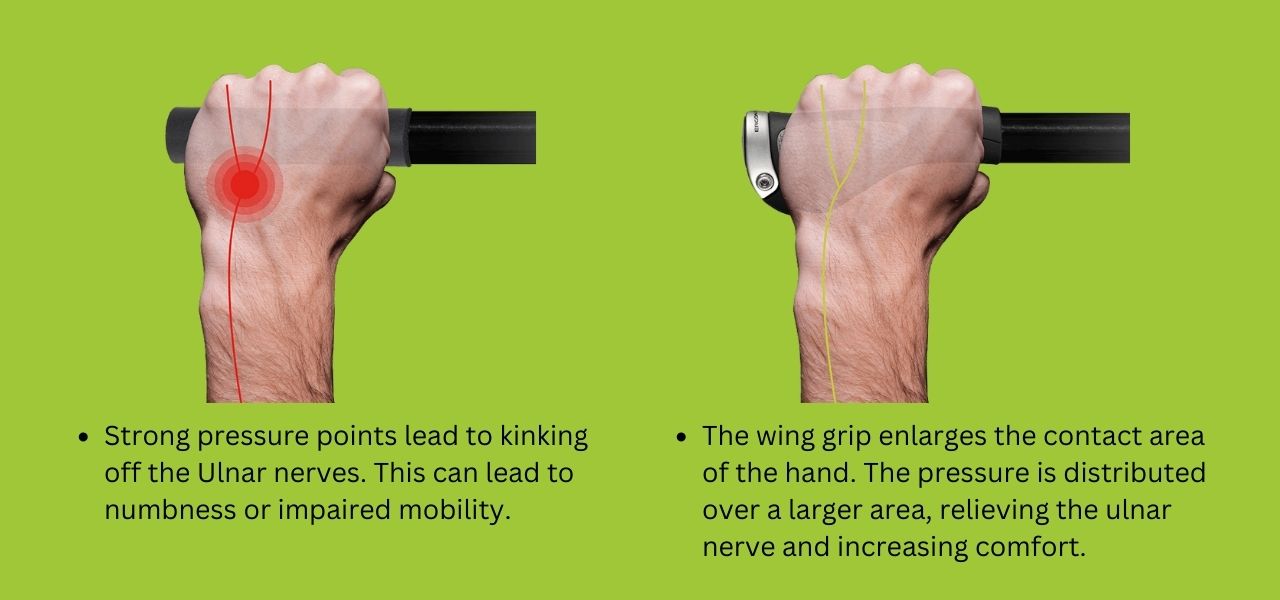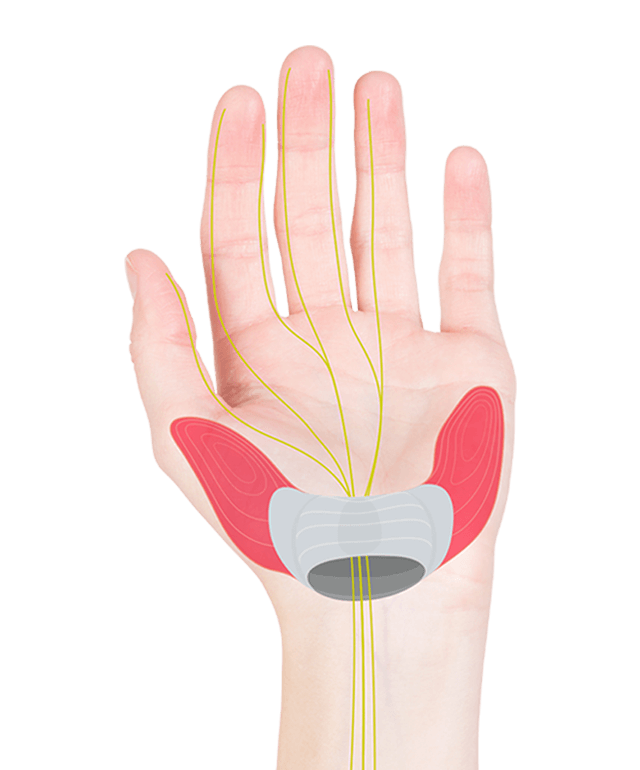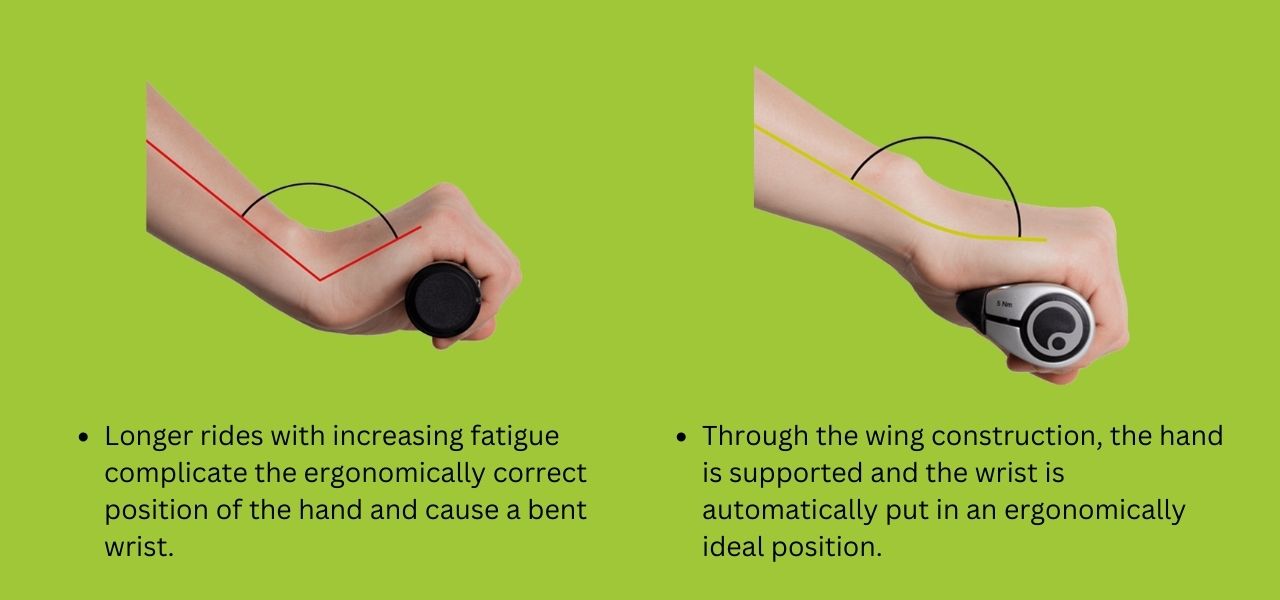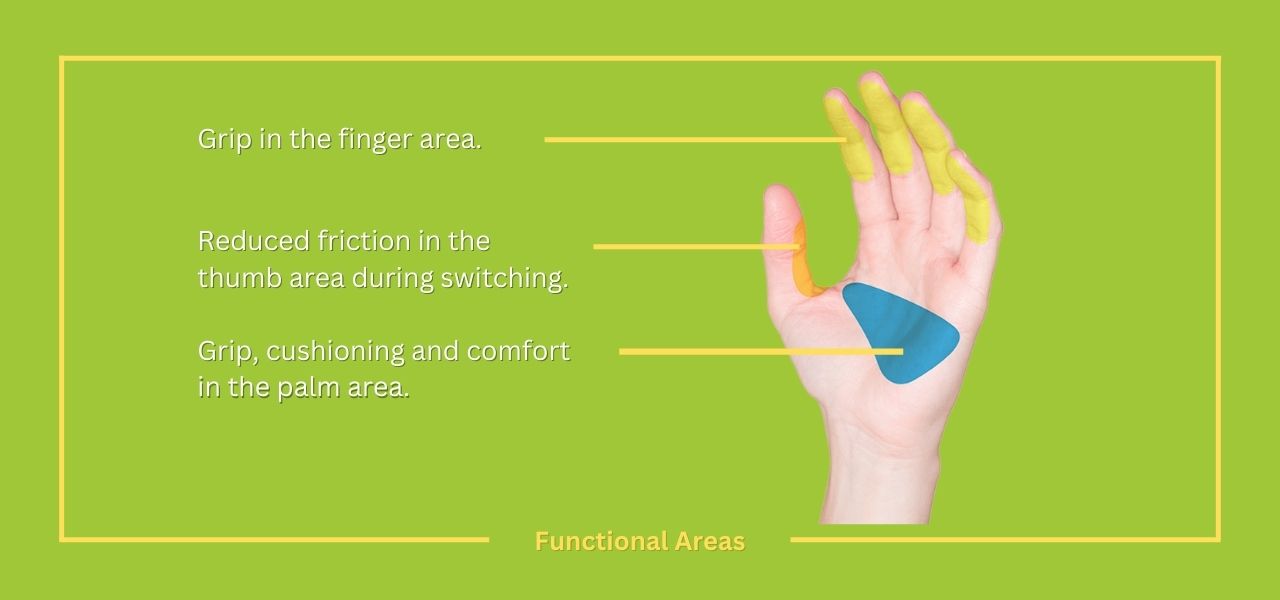Ergonomics of gripping
The hand
Many recreational and professional cyclists know the problem when the hands fall asleep or begins to tingle. The hand is a very complex and sensitive part of the body, a lot of nerves running through the wrist, which is a bottleneck and thus a problem zone. Due to the low fat and muscle, the hand is less protected and thus vulnerable to pressure load.
Why do I get hand pain?
The hands bolster a large part of the upper body weight onto the handlebars. Thus there is constant and high pressure onto a small area causing nerves to be irritated. To make matters worse, many cyclists bend their wrists too much. The result is sensory loss, tingling, numbness or abnormal sensations in the little finger and ring finger. In extreme cases, even the grasping function of all fingers is limited.
What can I do to combat hand pain?
Hand pressure must be distributed on a wider scale. Through a larger contact area of the grip, the forces are distributed better and the nerves are not irritated. A rider who has these problems should opt for an ergonomic wing grip. Through the use of a screw clamp, Ergon grips can be fixed to a custom and individual angle on the handlebar. The result, the wrist is actively prevented from kinking of falling downward.
Ulnar nerve irritation
In the area of the little finger, the ulnar nerve runs close below the skin surface, leaving the nerve very exposed against pressure loads.


Carpal tunnel syndrome
With the bending of the wrist, nerves, tendons, and blood vessels are compressed. Consequently, the carpal tunnel can narrow and damage the median nerve.

Functional Areas
Ergon grips are seperated into different functional areas. Different textures are used to optimize the specific use of each area.

Full Article Source: Ergon Page
